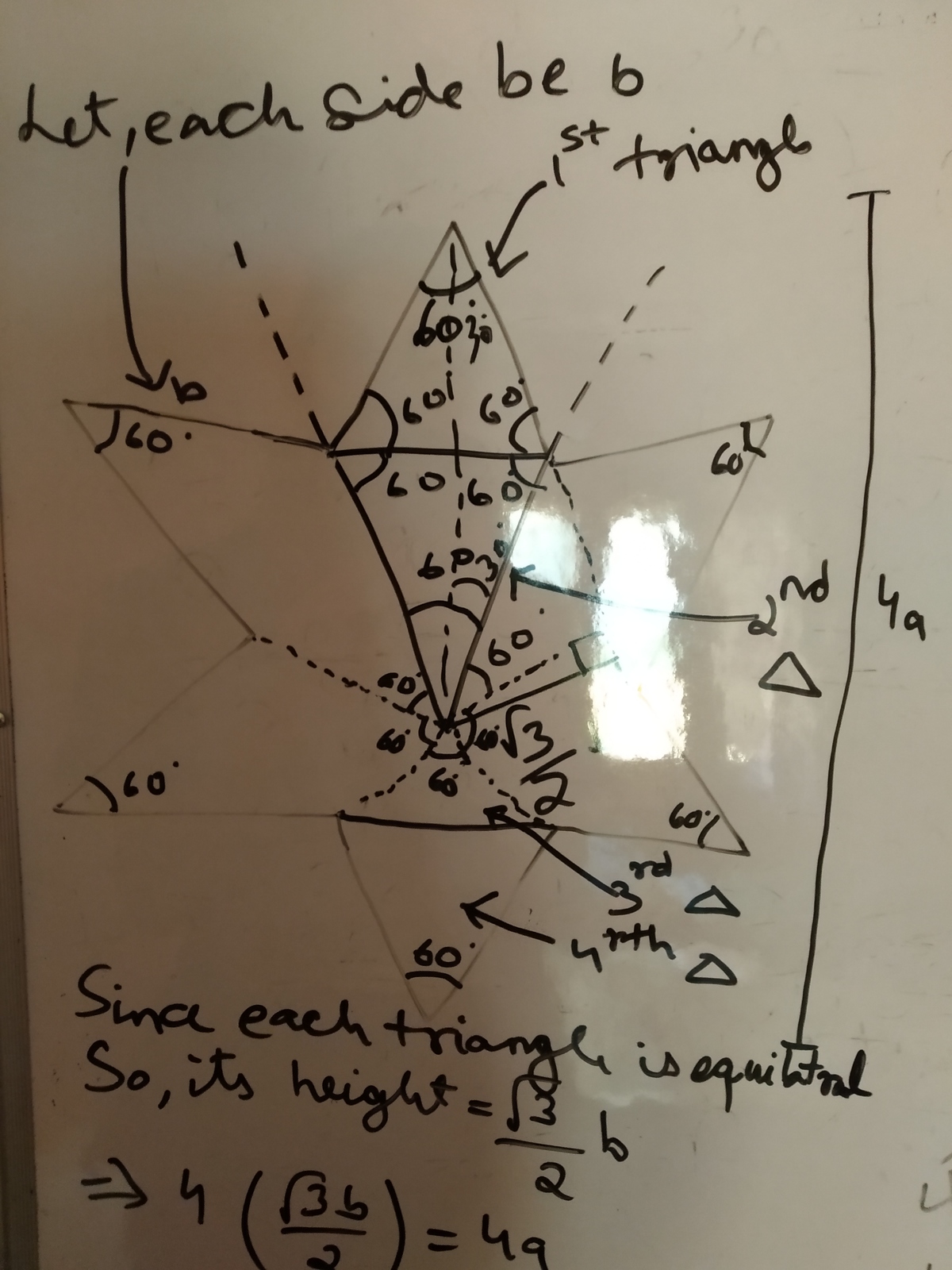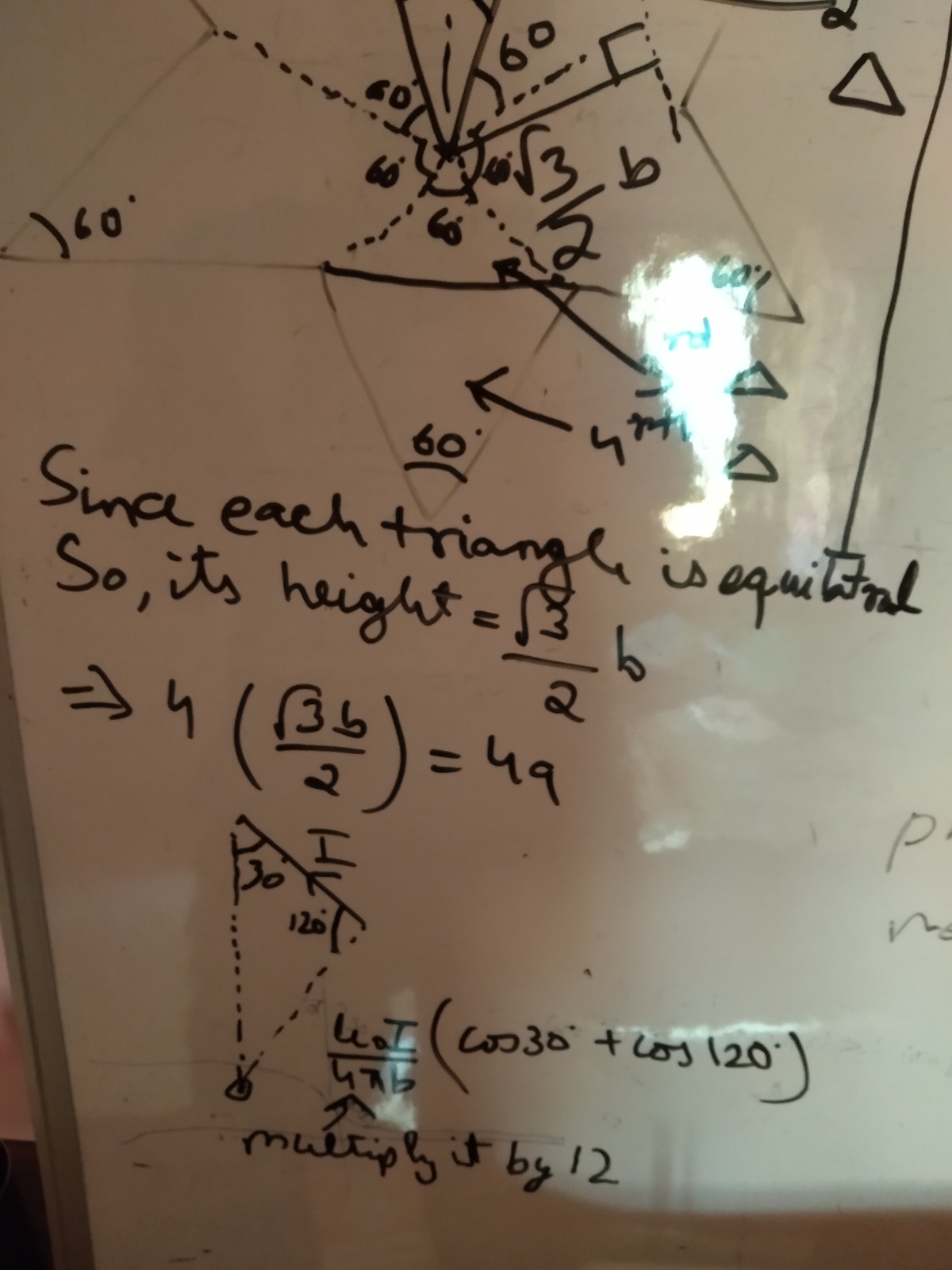Magnitude of magnetic field inside a star shaped wire
Here is question in image -

This section requires Javascript.
You are seeing this because something didn't load right. We suggest you, (a) try
refreshing the page, (b) enabling javascript if it is disabled on your browser and,
finally, (c)
loading the
non-javascript version of this page
. We're sorry about the hassle.
3 solutions
Could you add a non computer based answer because its a question of JEE ADV. 2017
I see that you have posted the solution also. I plan to do a follow-up which requires more generality in the solution
The way I solved it was by superposition.
Consider the star as two overlapping large triangles (upper and lower pointing) with currents going in one direction, and a smaller hexagon that subtracts the inner segments as current that goes the opposite direction.
The neat part is the perpendicular distance to the center is always a for all the segments. Just find the contribution from the longer segment minus the shorter segment and times 6 by hexagonal symmetry:
B = − 6 ⋅ 2 π a μ 0 I ( sin π / 6 ) for the small segments of the hexagon. B = + 6 ⋅ 2 π a μ 0 I ( sin π / 3 ) for the longer segments of the triangles.
Thus, the total would be B = 4 π a 6 μ 0 I ( 3 − 1 ) .
Wow! This method is really fast. Thanks for solution. Brilliant
Here is the solution - its easy

 just used biot-savart law for one straight wire and multiplied with all 12 to get total
just used biot-savart law for one straight wire and multiplied with all 12 to get total
I used computational Biot-Savart. Python code is below. Note that the code is general enough to compute the magnetic field at any point within 3D space, but this would require computation of all twelve edges individually, instead of calculating one pair of edges and multiplying by 6.